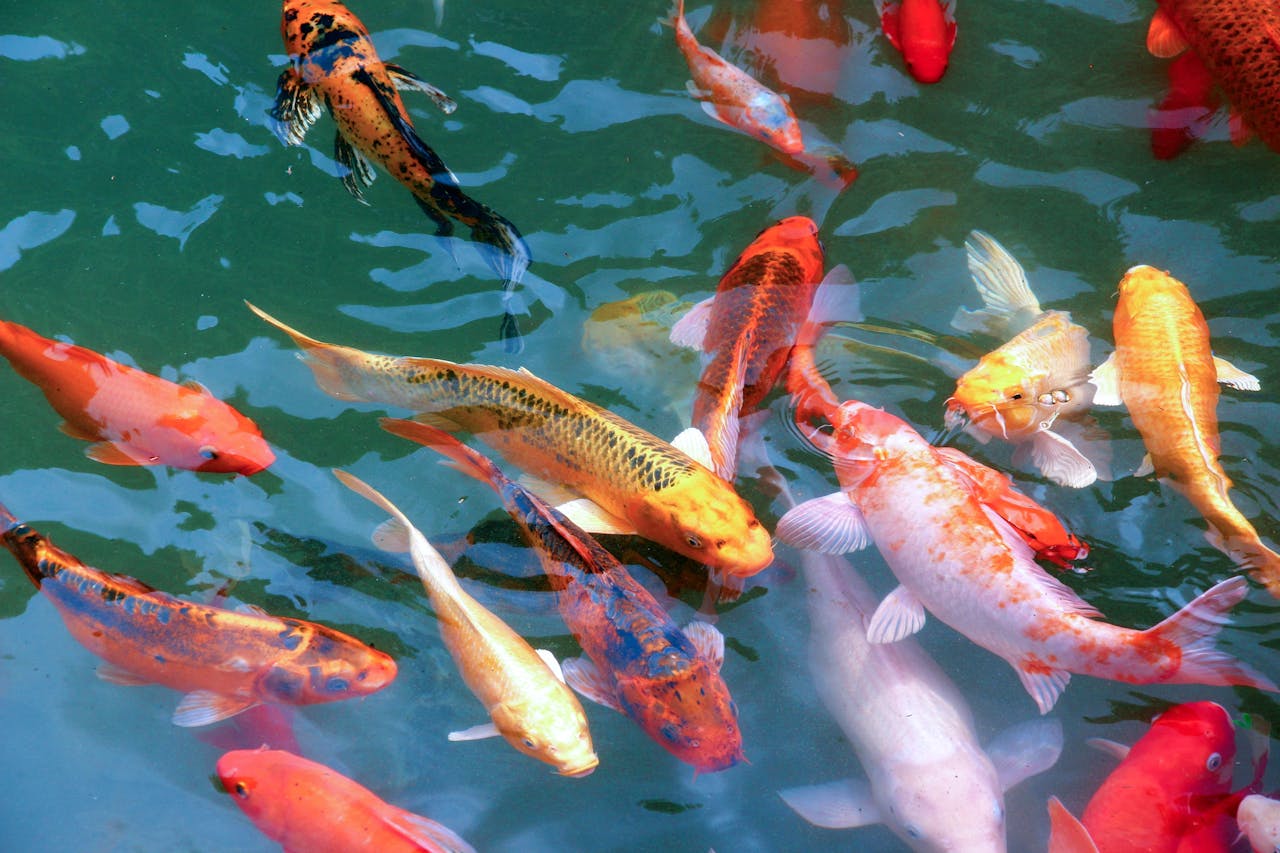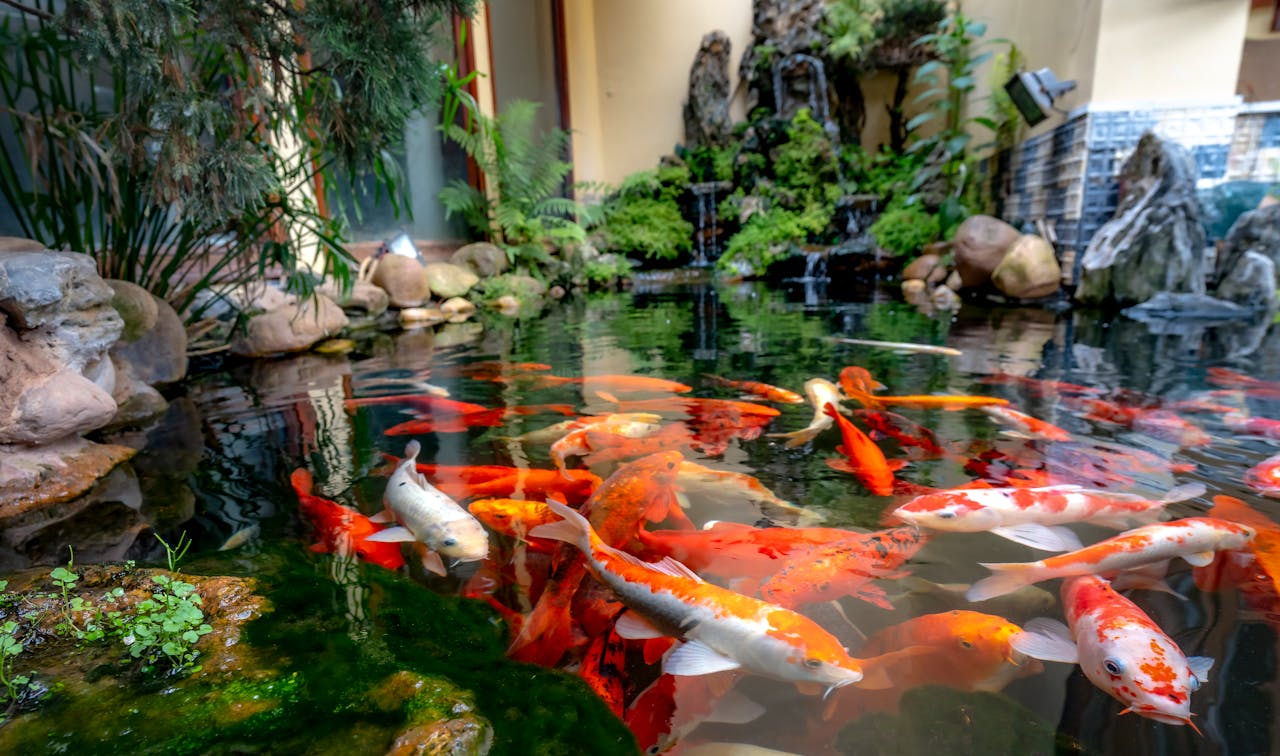
Introduction
Importance of Koi Fish Colors and Patterns
Koi fish are not just fascinating creatures to observe; they hold significant meaning in various cultures, especially in Japan. The vibrant colors and intricate patterns of koi are often associated with various symbols, such as prosperity, good fortune, and tranquility. Each color can carry its own unique significance, enhancing the aesthetic value of these aquatic beauties in ponds and gardens. When I first started my own koi pond, I was amazed by how much joy the colors of these fish brought me. The yellows, oranges, and deep reds of red, orange, and yellow koi varieties can brighten any outdoor space and lift your spirits. Additionally, the serene presence of white and black koi varieties creates a calming effect that many people cherish. Some key reasons why koi colors and patterns are important include:
- Symbolic Meaning: Different colors can represent various blessings.
- Aesthetic Appeal: Stunning visuals make your pond a focal point.
- Collectibility: Certain patterns and colors increase the koi’s value in aquaculture.
Brief History of Koi Fish
The history of koi fish is as rich as their colors. Koi originated from the common carp in East Asia over 1,000 years ago. Initially bred for food, Japanese farmers began cultivating these fish for their striking appearance. By the 19th century, koi breeding had evolved into an art form, giving rise to various strains like Kohaku and Showa. I remember attending a local koi show where the diversity of colors and patterns took my breath away. It was evident that koi fish have become a symbol of cultural significance and a popular hobby for many enthusiasts around the world. Today, these beauties are celebrated not only for their colors but also for their majestic grace and tranquil presence in our lives.
Understanding Koi Coloration
Red, Orange, and Yellow Koi Varieties
When it comes to koi fish, the vibrant hues of red, orange, and yellow are truly eye-catching. These colors not only add brightness to any pond but also carry their own symbolic meanings. For instance:
- Red Koi: Often represents power and strength.
- Orange Koi: Symbolizes happiness and encouragement.
- Yellow Koi: Associated with wealth and prosperity.
During my koi journey, I added a beautiful orange koi to my pond, and the joy it brings every time it swims around is indescribable! These warm colors enhance the aesthetic appeal of a koi pond while drawing the eye to their lively movements.
White, Black, and Grey Koi Varieties
In contrast, the more subdued colors of white, black, and grey koi bring balance and elegance. These colors can create a serene environment, and they often complement the brighter koi varieties beautifully.
- White Koi: Symbolizes purity and purity.
- Black Koi: Represents protection and potential.
- Grey Koi: This can indicate transformation and individuality.
I’ve noticed how my black koi provides a stunning backdrop against the vibrant colors of others, making each fish stand out even more. The beauty in these contrasting colors lies not just in their appearance but also in their diverse meanings, making koi fish a wonderful addition to any garden pond. In essence, understanding the colors of koi fish opens up a world of beauty and symbolism that enhances our appreciation for these magnificent creatures.
Popular Koi Patterns
Kohaku and Taisho Sanke Patterns
When discussing koi fish, two names often come up: Kohaku and Taisho Sanke. These patterns are not only popular but also widely celebrated among koi enthusiasts.
- Kohaku: This pattern features a striking combination of white skin with red markings. It’s like wearing a crisp white kimono adorned with bold, vibrant red accents—truly mesmerizing! I remember the first time I saw a Kohaku koi gliding through my pond, its red and white crisp contrast left me in awe.
- Taisho Sanke: This pattern is reminiscent of Kohaku but adds a touch of black. With white skin, red patches, and black markings, it’s a striking visual that captivates anyone looking. I found myself drawn to a particular Taisho Sanke at a koi show; its intricate design told a story of elegance and strength.
Showa and Utsuri Patterns
Next up are the Showa and Utsuri patterns, which offer their own unique flair!
- Showa: With a rich black background interspersed with red and white patterns, this koi exhibits a powerful contrast that really stands out in any pond. The combination of colors gives the koi a regal appearance. I often find myself admiring my Gin Rin Showa koi as it dances in and out of the water, reflecting sunlight like a jewel.
- Utsuri: This pattern showcases black with red, yellow, or white markings, creating a beautiful interplay of colors. Utsuri koi are fascinating because their colors can change based on various factors. When I first added an Utsuri koi to my pond, I was curious to see how its patterns would evolve over time.
Each of these patterns offers not only aesthetic appeal but also a story—a legacy that’s woven into the world of coy fish.
Factors Influencing Koi Color
Genetic Influences on Coloration
Understanding the beautiful colors of koi fish starts with their genetics. Just like in humans, traits are inherited, and koi are no exception! The patterns and colors we adore come from a complex blend of genes passed down from parent koi.
- Heritability: Specific color traits can be distinctly inherited. For example, if you have a stunning red Kohaku, there’s a good chance its offspring will also showcase that vibrant hue.
- Genetic Variability: It’s fascinating to note that a single breeding pair can produce koi with a wide range of colors and patterns, based on the dominant and recessive traits churning through their DNA.
When I first bred my koi, I was thrilled to see how different the offspring were, ranging from deep reds to brilliant whites. It was a delightful surprise every time! If you are looking for high quality koi fish for sale then you can find from many websites in online.
Environmental Factors Impacting Color
Beyond genetics, environmental factors also play a significant role in koi coloration. The water quality, temperature, and even diet can influence how vibrant your koi appear.
- Water Quality: Clean, healthy water allows a koi’s colors to shine. Too much algae or impurities can dull their vibrancy.
- Diet: A balanced diet rich in carotenoids can enhance red and orange hues. I discovered this when I switched to a high-quality koi food with natural pigments—my koi seemed to boast brighter colors overnight!
- Sunlight Exposure: Many koi enthusiasts, including myself, have found that koi thrive and develop better coloration in sunny conditions, albeit with some shade for protection.
By tuning into both genetics and the environmental conditions, you can create a thriving habitat that encourages your koi to show off their stunning colors!
Tips for Enhancing Koi Colors
Proper Nutrition and Diet for Vibrant Coloration
One of the most impactful ways to enhance koi colors is through proper nutrition. Just like we thrive on a balanced diet, koi fish also benefit from high-quality food specifically designed for their needs. Here’s what I’ve learned over the years:
- High-Quality Koi Food: Opt for pellets that include natural color-enhancers like spirulina and astaxanthin. These ingredients have been proven to bring out vibrant reds and yellows.
- Variety in Diet: Mixing in live foods like brine shrimp or bloodworms can also enhance their overall health and coloration. I remember the excitement of seeing my koi thrive after introducing live food into their diet!
- Regular Feeding Schedule: Feed them small amounts multiple times a day rather than one large meal. This ensures they get the nutrients they need consistently.
Maintenance of Water Quality for Color Enhancement
There are koi fish sellers selling large koi fish for sale from their websites.
Water quality is equally crucial for showcasing your koi’s colors. Clean, well-maintained water allows your koi to thrive and show off their stunning hues. Here are some tips:
- Regular Testing: Keep a keen eye on water parameters such as pH, ammonia, and nitrate levels. Regular testing helps maintain optimal conditions for your koi.
- Filtration System: Invest in a good filtration system that keeps the water clean and clear. I’ve noticed that when my pond’s water is pristine, my koi seem to be even more vibrant!
- Partial Water Changes: Performing regular partial water changes can help remove toxins and provide fresh, clean water.
By focusing on nutrition and water quality, you’re not only enhancing your koi’s colors but also contributing to their overall health and well-being. Trust me, I’ve seen delightful transformations in my koi, and it truly makes all the difference!

